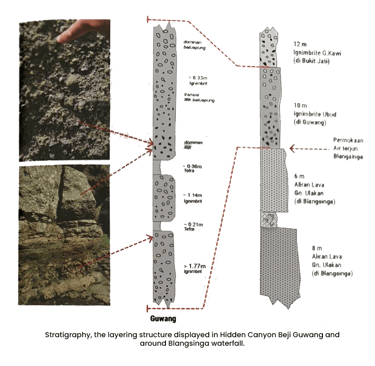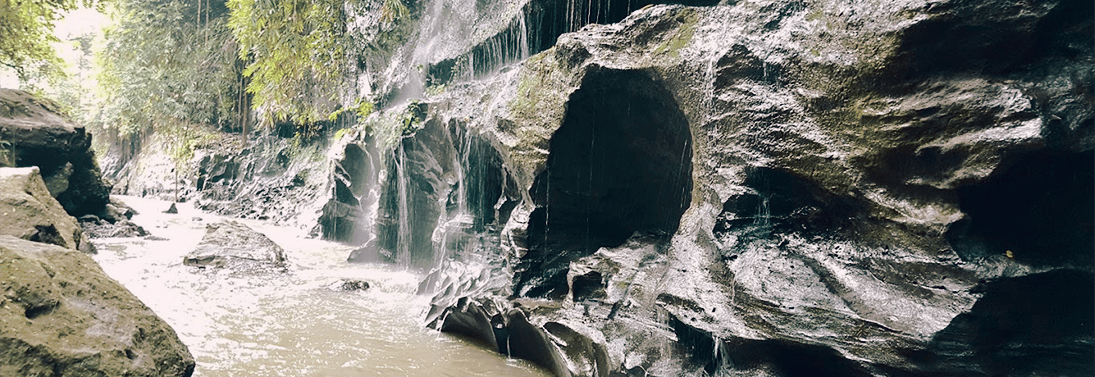
CANYON
STORY OF

Mount Batur Eruption Deposit Wall:
Witnessing a Massive Eruption in Bali
The eruption deposit wall of Mount Batur, located on the banks of the Guwang River, Bali, stands as a testament to the colossal eruption that formed the Batur caldera roughly 10,000 years ago. This deposit, known as ignimbrite, holds a wealth of information about this monumental geological event.
Components of Ignimbrite:
Ignimbrite is composed of three main components:
Lithic: Fragments of rock from the volcano and its surroundings, formed by the shattering of rocks above the magma chamber, within the eruption conduit, or even from the peak of the volcano itself. Lithic fragments range in size from fine ash to large boulders.
Pumice: A lightweight, hollow volcanic rock formed by gas bubbles trapped in magma. Pumice is always present in ignimbrite deposits, signifying high pressure within the magma chamber and a long period of volcanic inactivity.
Glass: Magma that cools rapidly, resulting in thin, sharp shards of volcanic glass. Volcanic glass in ignimbrite indicates a violent fragmentation process of the magma during the eruption.


Formation Process of Ignimbrite:
Ignimbrite forms from pyroclastic flows, which are fast-moving avalanches of hot ash and gas that race down the slopes of a volcano. In a super-large eruption like Batur's, the immensely tall and dense eruption column collapses, generating a powerful pyroclastic flow. This flow then cools and solidifies, forming extensive ignimbrite deposits.
Characteristics of Ignimbrite Deposits:
The bottom layer of an ignimbrite deposit typically consists of breccia with large rock fragments.
Moving upwards, the deposit is composed of progressively finer material, such as volcanic sand and ash.
Pumice is generally found above the lithic deposits.
Fiamme, long, thin black streaks, are formed from pumice that remelt upon being buried within the deposit.
Significance of Ignimbrite Deposits:
Ignimbrite deposits offer numerous benefits to scientists:
They provide information about the force and style of past volcanic eruptions.
They aid geologists in reconstructing paleogeography and assessing volcanic hazards.
They serve as a source of raw material for various purposes, including construction and industry.
Major Eruptions in Indonesia:
Indonesia has a long history of powerful volcanic eruptions that produced ignimbrite deposits. Some examples include:
Mount Rinjani in 1257 (eruption volume > 40 km3)
Mount Tambora in 1815 (eruption volume 33 km3)
Mount Krakatau in 1883 (eruption volume 12.5 km3)
The Mount Batur eruption deposit wall in Bali is a reminder of the immense power of nature. By studying these deposits, we can gain a deeper understanding of the geological history of the region and better prepare ourselves for potential volcanic hazards in the future.




